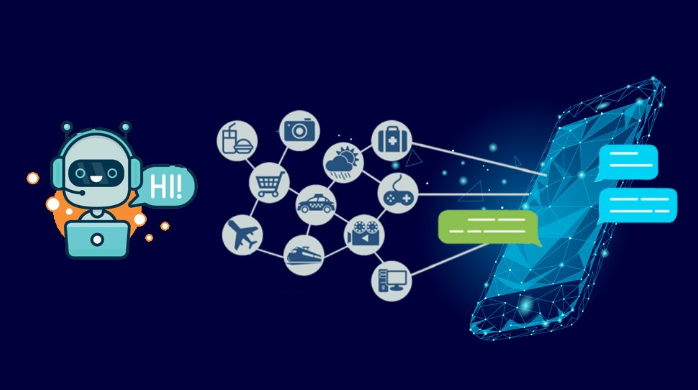
In the age of digital transformation, businesses across various industries are continually seeking ways to optimize customer interactions and enhance customer satisfaction (CSAT). One remarkable solution that has emerged is the integration of chatbots into customer service operations. Let’s explore how chatbots are revolutionizing customer interactions, catering to the pain points of modern businesses.
The Rise of Chatbots
Chatbots are AI-powered virtual assistants that can engage with customers in real-time via chat interfaces. They have gained widespread adoption across industries such as retail, healthcare, finance, and technology due to their ability to streamline customer interactions efficiently. Chatbots offer several advantages that directly address the challenges faced by businesses in optimizing customer satisfaction.
1. 24/7 Availability
One of the primary pain points for businesses is providing round-the-clock support to customers. In industries like travel and telecommunications, where customers may require assistance at any hour, chatbots excel in ensuring 24/7 availability. These virtual assistants can answer inquiries, process requests, and even troubleshoot issues at any time, significantly improving CSAT by eliminating long wait times.
2. Rapid Responses
Customers today expect swift responses to their queries and concerns. Chatbots are designed to provide instant responses, which is especially valuable in retail and e-commerce, where customers often have questions about products, orders, or returns. By addressing inquiries promptly, chatbots contribute to a positive customer experience, increasing satisfaction levels.
3. Scalability
As businesses grow, so does the volume of customer interactions. Scaling customer service operations to meet increasing demand can be challenging and costly. Chatbots offer an efficient solution. They can handle multiple conversations simultaneously, allowing businesses to manage higher volumes of inquiries without a proportional increase in staffing. This scalability is particularly beneficial in sectors like healthcare and finance, where the ability to manage a large customer base is crucial for optimizing customer satisfaction.
4. Consistency
Maintaining consistent customer service across various channels and touchpoints is a significant concern. Chatbots ensure that customers receive consistent responses and information, whether they are engaging on a website, mobile app, or social media. This uniformity is vital in industries like legal and government/public sector, where accuracy and consistency are paramount to optimizing customer satisfaction.
5. Data-Driven Insights
Chatbots also play a role in gathering valuable data insights. They can collect data on customer preferences, common issues, and frequently asked questions. This data is invaluable for optimizing customer satisfaction by identifying areas that require improvement. In the automotive and energy/utilities sectors, for instance, chatbots can gather data on customer complaints or concerns, allowing businesses to address these pain points effectively.
6. Human-Agent Collaboration
While chatbots are highly efficient, there are scenarios where human intervention is necessary. In these cases, chatbots can seamlessly transfer conversations to human agents, ensuring a smooth transition. This human-agent collaboration is vital in industries like education and non-profit organizations, where a personalized touch may be required to optimize customer satisfaction.
Language Support and Localization
Chatbots are versatile in their ability to support multiple languages and provide localization options. In a globalized business landscape, this capability is invaluable, especially for industries such as travel and hospitality, where customers from diverse linguistic backgrounds seek information and support. Chatbots can offer responses in various languages, ensuring that customers can communicate comfortably in their preferred language. Additionally, they can provide localized information and recommendations based on a customer’s geographical location, contributing to a more tailored and satisfying experience.
Continuous Learning and Improvement
One of the remarkable aspects of chatbots is their capacity to learn and improve over time. Through machine learning algorithms, chatbots can analyze past interactions, customer feedback, and historical data to refine their responses and capabilities. This continuous learning process is crucial for staying relevant and optimizing customer satisfaction. In technology and telecommunications, where rapid advancements occur, chatbots can adapt to new products, services, and customer inquiries, ensuring that customers receive accurate and up-to-date information. This adaptability and commitment to improvement result in enhanced customer satisfaction and loyalty.
Enhancing Customer Satisfaction
At the heart of chatbot integration is the goal of enhancing customer satisfaction. By providing 24/7 availability, rapid responses, scalability, consistency, data-driven insights, and facilitating human-agent collaboration, chatbots address the pain points faced by businesses across various industries. Whether it’s assisting with product recommendations in retail, answering healthcare queries, or providing financial information, chatbots contribute significantly to a positive customer experience and increased satisfaction.
In conclusion, the role of chatbots in streamlining customer interactions cannot be overstated. They offer a versatile solution for optimizing customer satisfaction by addressing the pain points faced by modern businesses. As technology continues to advance, chatbots will continue to evolve, providing even more sophisticated and personalized experiences for customers across industries. By leveraging the power of chatbots, businesses can navigate the challenges of optimizing customer satisfaction in the digital age successfully.

Leave a Reply